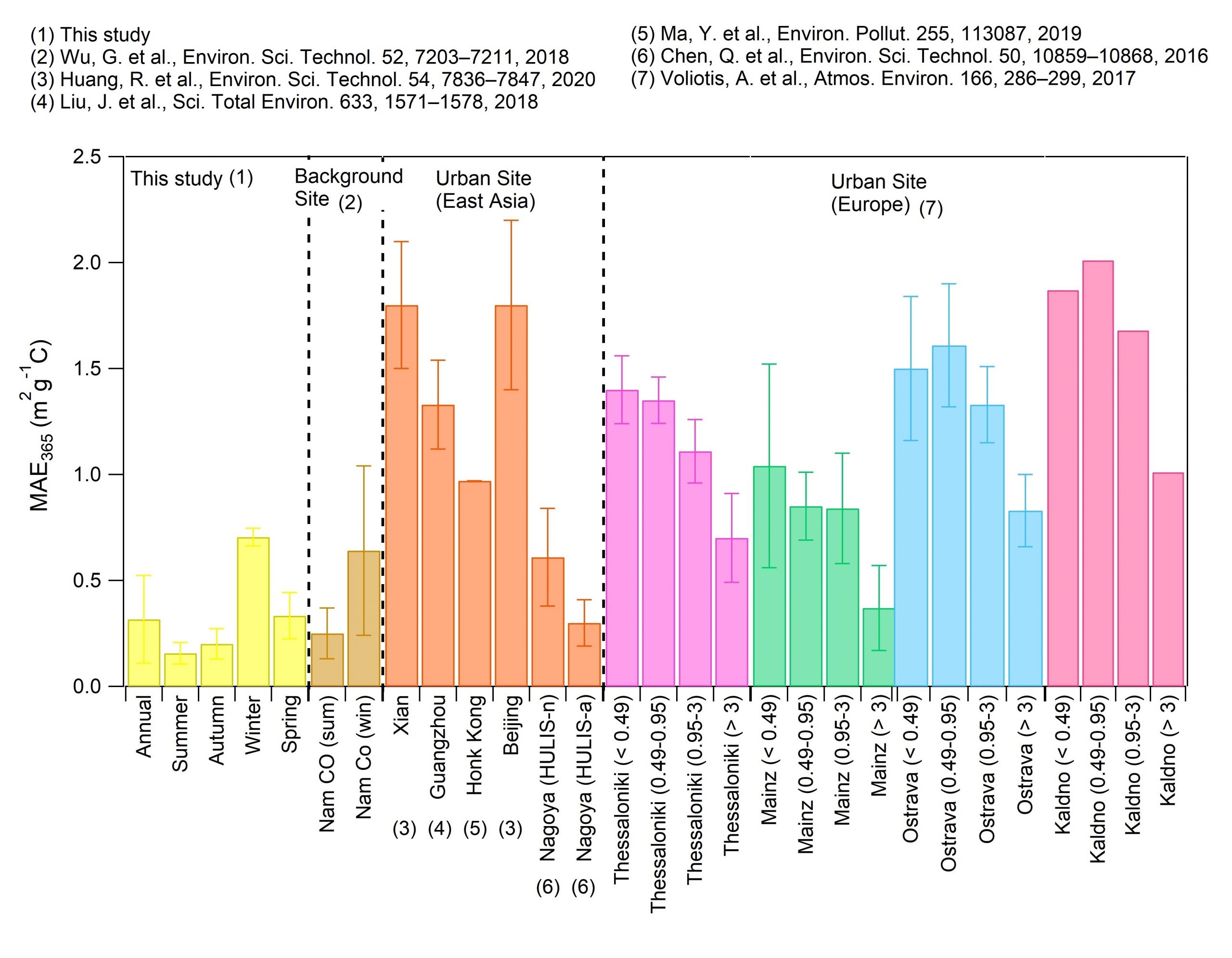Abundance, chemical structure, and light absorption property of atmospheric organic aerosols in a forest in Hokkaido: Weak light absorption property of biogenic organic aerosol components
2022-08-25
Sonia Afsana in Graduate School of Environmental Studies, Nagoya University, Michihiro Mochida at Division of Meteorological and Atmospheric Research, and their research team have characterized the abundance, chemical structure, and light absorption property of atmospheric organic aerosols in a forest in Hokkaido. Further, they have shown that the formation of aerosols from organic vapors of biogenic origin contributes significantly to the abundance of the organic compound group named humic-like substances (HULIS), and that the HULIS measured in the forest had a weaker light-absorption property than HULIS in urban sites.
Atmospheric organic aerosol has an ability to absorb light, and its effect on the radiative balance of the Earth is recently highlighted. In this study, the abundance, chemical structure, and light absorption property of atmospheric organic aerosol in a forest in Hokkaido has been characterized, based on a method to extract organic fractions with low to high polarity from aerosol samples collected on filters. The light absorption property of HULIS and another organic fraction enhanced in winter, the causes of which may include the contribution of long-range-transported aerosols. The concentration of HULIS was high in summer, and the results indicate that the aerosol formation from organic vapors of biogenic origin contribute significantly to the abundance of HULIS and that HULIS measured in the forest has a weaker light-absorption property than that of HULIS measured in urban sites (Figure). Recently, it is suggested that the enhancement of the release of organic vapors of biogenic origin by warming would mitigate the warming through the effect of the generated aerosols to the radiative balance. The results from this study suggest that such aerosols have a weak light absorption property (i.e., they are not efficient in warming the air), and are considered to be a clue to understand the relationship between climate and aerosols originated from vegetation.
This study was published in Scientific Reports on August 23, 2022. The study was supported by JSPS under KAKENHI Grant Number JP19H04253 and JRPs-LEAD with DFG, Grant number JPJSJRP20181601.
Publication
Sonia Afsana, Ruichen Zhou, Yuzo Miyazaki, Eri Tachibana, Dhananjay Kumar Deshmukh, Kimitaka Kawamura, and Michihiro Mochida: Abundance, chemical structure, and light absorption properties of humic‑like substances (HULIS) and other organic fractions of forest aerosols in Hokkaido, Sci. Rep., 12, 14379, 2022.
URL: https://doi.org/10.1038/s41598-022-18201-z



